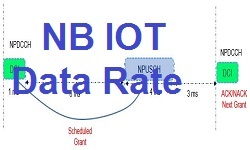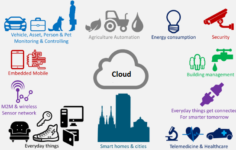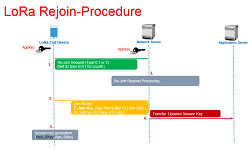Beacons Technology – What it is, How it works and Its Applications and Challenges
Imagine! You come back to home after a tiring day from office and are warmly welcomed with a cup of tea. Your home senses your presence and it switches on the lights as you enter and turns on the music system to your favorite songs. you roaming in shopping mall and just in the proximity of a cafe and get notification about the running discount. you are in hunt of parking in mall and receive a notification parking is empty 10 meter on the right.
These are not far-fetched ideas, it’s Beacon technology. Beacons have now forged their way into our homes to digitize our personal space, retail, events, museums, and more. Beacons allow to create smart home, smart cities and smart things everywhere in cost effective way. Beacons demonstrated, how IoT is fast empowering the integration of digital and physical worlds, all over.
What is Beacon and how it works?
A Beacon is a transmitter at a known location, which continuous or periodic signal with limited information content. A radio technology can be used to identify location and most commonly used RF technologies are Wi-Fi, Bluetooth and RF ID.
Beacons indicate their presence with periodic signal so that the enabled device like mobile handset can locate them. Each beacon is given a unique identifier. When the mobile device detects the beacon signal, it reads the beacon’s Unique identifier, calculates the distance to the beacon and, based on this data ( coupon, video, form, URL or other forms of information), triggers an action in a beacon compatible mobile app.![]()
Figure: 1
Most of the beacons today uses BLE technology, because of its low power consumption and implementation costs. The technology only allows for small amounts of data transmission, which is why most beacons only transmits their IDs. Beacon IDs consists of a maximum of three values:
- A universally unique identifier (UUID)
- A major value (optional)
- A minor value (optional)
Besides these three values, every beacon also transmits information about its signal power. This information is used by the app to calculate the distance from the source.
End to End Beacons System
The end to end complete beacon enable system is consist of following
- Beacon enabled Application
- Network of deployed beacons
- Bluetooth enabled Device with relevant permissions
- Management platform
In order to use beacon technology a beacon enabled mobile application is required. One need to purchase and deploy beacons to one or multiple physical locations. Once deployed, ensure that mobile app is listening for the unique ID’s (UUID’s) of the beacons in network as shown in figure 2.![]()
Figure: 2
In addition to Bluetooth being switched on at the device level, some app-level permissions also required to use beacon technology. These are;
- Push notifications
- Location services
Once beacons are deployed and app is listening for them, then the easy way to manage content and assess performance of beacon. A management platform allows to set up locations and zones, manage content, automate processes and view detailed analytics.
Benefits of using beacon technology:
- Location Accuracy Beacon technology allows a mobile device to understand it’s exact position, even indoors where smartphones are typically not able to pick up GPS signals from satellites. This means beacon technology offers a high level of accuracy when compared to other geo-location technologies.
- Long Battery lifeBluetooth technology used in beacon is designed to have very low power consumption, which means that beacon powered apps have minimal impact on the devices battery life. GPS on the other hand, demands a significant amount of power to run and therefore significantly impacts battery life when in use.
- App Wake-upMobile devices automatically wake-up when they come within ranges of beacons, even if the mobile app that is listening is fully closed. This unique feature of beacons offers a powerful way to drive engagement with your mobile app at exactly the right time and place. It’s also a great to drive repeat usage of your app.
- No Internet ConnectivityMobile apps can pick up beacon signals without an Internet connection and store data locally on the device. This means beacons are a great proximity trigger in areas where a stable Internet connection is not available. It’s worth noting that typically an Internet connection is required to trigger content such as push notifications. However, there are ways around this such as developing local notifications and caching content within the app. It is technically possible to run an entire beacon experience without an Internet connection.
- Low cost of entrySetting up a Bluetooth enabled network is relatively low cost when compared to other technologies such as Wi-Fi. Unless deploying a large network of beacons, most of the costs are likely to be associated with the development of a beacon enabled mobile app. A single beacon transmitter cost about just 5 $.
Beacons Applications in Various Industries:
Beacons are a beneficial new twist on location awareness, tying an uncommon ID to a small device that applications can use to discover not just location but another relevant context about the beacon’s location or what it is connected to. It seems like that this new and best way of connecting with customers. Following are the different fields where beacons technology can helpful.
Figure. 3
Challenges with Beacon Technology
- Manageability : A beacon network may have thousands of hardware devices in hundred’s of stores. So the provisioning, monitoring, maintenance of these many small-2 device is a challenge.
- Privacy and security: “Big Brothers (Hackers) are always in hunt”. Beacons requires location permission to be enabled in app devices so there can be privacy concerns. Bluetooth is inherently not much secure and beacons does not provides strong encryption, authentication and authorization procedures makes it less secure
- Battery: Most of the beacons operates on battery and there is not mechanism to get the information that how much battery is left in particular beacon and how much more time is can serve. Beacons transmitting regular and very frequent notification also impact listener’s mobile phones battery. These all shall requires optimization and control.



